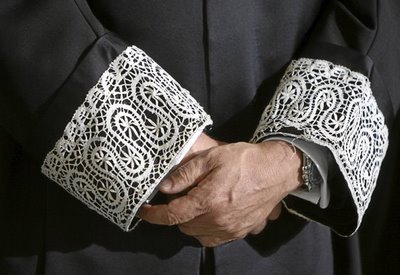
For ETA, for many of its components and supporters, who also live in Latin American countries, Baltasar Garzón is an unwelcome person that has starred in a relentless struggle to arrest those responsible for nearly a thousand murders committed by the gang from 1961 to 2010. Even now, when the situation in the Basque Country has normalized and local, regional and Spain Congressional institutions include numerous political representatives with nationalist ideology and the like, Garzón remains ill-considered among those who define their ideology close to ETA.
ETA was born in Bilbao on July 31, 1959. The acronym refers to the phrase “Euskadi eta askatasuna” in Basque, which means “Basque Country and Freedom.” In principle, it was a group consisting mainly of radical students who wanted to be an alternative to the PNV (Partido Nacionalista Vasco [Basque Nationalist Party]). Its objectives were transformed over the years but remained since its creation, the demand for the Spanish and French states to recognize the independence of the Basque Country, territory comprising Álava, Guipúzcoa, Vizcaya, Navarre and the French Basque Country.
In 1961 they committed their first attempt on a train of Civil War veterans and arrests and exiles began.
From that date until 1975 the year of the death of the dictator Francisco Franco a total of 43 people were murdered including officials and ordinary citizens. From 1975 until 2020, in the transition to a full democracy, the number of people killed by ETA totalled 823. Among them 483 belonged to State Security or military Forces. The remaining 343 victims were civilians, men, women and children. The gang members have always presented themselves as liberators of the Basque Country or Basque patriots.
From his position at the court of Instruction No. 5 of the High Court, Baltasar Garzón has led numerous investigations on multiple operating groups of the terrorist organization from 1988 to the present and the arrest of those responsible for numerous attacks resulting in deaths, devastation, kidnapping, extortion, threats, fire, damage, interception of explosives, heavy weapons…
To cite only some of Garzón’s operations against these criminal acts, we highlight:
Attacks against the Directorate General of the Civil Guard, bombing in plaza de Ramales, calle Badajoz in Madrid, the Plaza de la República Dominicana, killing of Francisco Tomás y Valiente, ex-president of the Constitutional Court; attack against Manuel Broseta Pons, former minister of the government of Adolfo Suárez; attack on IFEMA installations, attacks on the Guardia Civil barracks in Durango, arrest of those responsible for the abduction of Ortega Lara, release of José Ortega Lara, attack on King Juan Carlos; the investigation and arrest of those responsible for fraud, extortion and international relations of the organization; arrest of those responsible for the recruitment and collaboration with ETA (called “pianists” with more than 100 people already tried which made up the most extensive network of recruitment for this organization).
Kale Borroka
Garzón has also conducted an investigation of ETA and other satellite organizations that make up the terrorist complex run by the former and which assume the violent “struggle” complementary to the “armed struggle” developed by ETA. This section includes the so-called Kale Borroka or “street fighting” by groups called Y, directed primarily against public and private properties and urban transport related banking or business; as well as all the complementary illegal activities necessary for the activity of the whole social and political fabric that forms the basis of the organization in its more than 40 years of existence.
Companies and Parties
Since 1994 until today, under the same investigation system designed by Garzón, KAS, EKIN, XAKI, JARRAI, SEGI, Gestoras Pro amnistía, ASKATASUNA, EGIN, a network of companies that supported the organization have been investigated.
Also Udalbitza, Herri Batasuna, Euskal Herritarrok, Batasuna, PCTV, ANV, D3m and Askatasuna (political parties) and the Bateragune or Management Committee between ETA’s “military” and political structure. In all these investigations infrastructures were dismantled, unlawful activities have been declared, to the extent that the Supreme Court, having essentially the data accumulated in these investigations and documents, under the Law of Parties, stated the illegality of various formations, with these resolutions confirmed by both the Spanish Constitutional Court and the European Court of Human Rights in rulings in 2009 and 2010.
Also, the Supreme Court ratified various judgments pronounced by the High Court in establishing, as judicial truth, that which was a fact in the reality of the criminal acts of a terrorist organization. This enabled the true scope and size of the criminal structure to be established making its action effective.
Financial Framework
In 1998 it increased its activity against the ETA environment. Thus, in the context of a very large operation, it accused the Literacy and Basquisation Coordinator (AEK), a Basque coordinator for Basque adult literacy, of being the financial framework for the terrorist group. Although it failed to show the relationship between the two organizations, there were twelve arrests. That same year the newspaper Egin and the radio station Egin Irratia were closed down, accused of collaborating with ETA.
In April 2001, an order was issued closing the magazine Ardi Beltza (‘Black Sheep’), whose director, Pepe Rei, who had already been processed in the “Egin case”, was arrested and questioned on the grounds that he used this medium for terrorist organization purposes. New evidence against Rei was extracted according to Garzón from the magazine itself and the video that was distributed with it entitled “Journalists, the business of lying”, in which professionals were identified and later targeted by attacks or tracking by ETA members.
In November 2001, Garzón detained and questioned thirteen people linked to the movement Gestoras Pro Amnistía[Managers Pro Amnesty] (Gestorak), one of the strongest nationalist organizations in the framework of the support and struggle for the repatriation of ETA prisoners. The operation, called Udazken (‘Autumn’), involved over two hundred police who practiced early morning arrests in several locations in the Basque provinces and Navarre. At the same time, Garzón ordered the blocking of twenty-two bank accounts belonging to detainees and some companies.
Another of the judge’s actions was the outlawing of Batasuna, in an edict published in Madrid on August 26, 2002, for an alleged crime of forming part of a terrorist organization. Previously, on May 3, 2002, he had issued warrants for the arrest of eleven members of the radical nationalist party.
There are also some resolutions issued by Garzón during the negotiation process of 2006 setting that when these meeting occurred they were not criminal meetings and allowing certain public events calling for peace. The judge was heavily criticized for what represented a commitment to the peace process that was attempted to be developed.
Standardisation of coexistence
ETA has currently abandoned the armed struggle and the government and political forces are seeking the final exit to close this long and bloody history. Former terrorists are being released from prison having served their sentences. This situation also causes outrage among relatives of the victims and those victims wounded or injured by the group’s attacks, but the common goal is to achieve standardization of coexistence.
Although in Spain many ETA prisoners responsible for these crimes have come to ask for the forgiveness of their victims, and that in the Basque Country numerous municipalities and other institutions are governed by parties of marked independence, small groups close the old organization, living in American countries claim “Basque liberation from the oppression of the Spanish state.” They promote outdated and anachronistic situations. From these groups sometimes a biased and false accusation is made against Garzón.
